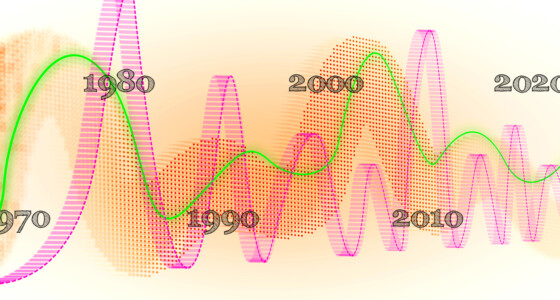

Trading strategies are very useful. They help beginner traders and professionals increase the probability of successful trades. Experienced investors and traders know that it’s a big mistake to enter the market without a plan. A trading strategy is a so-called plan on how to behave in certain market conditions. Keep reading to uncover the best trading strategy for you.
It was determined that adding technical analysis tools to investment rules may be more effective than other trading strategies.
What is a trading strategy?
A trading strategy is a set of rules to open a position based on market conditions. Although trading strategies are mostly based on technical indicators that analyze historical data, fundamental factors are also considered, as they create certain market circumstances.
The trading strategy will outline:
- Entry and exit points
- Risk management rules
- Market and technical analysis conditions that must be met
Outstanding trading strategies
There is no perfect trading strategy.
Every trader should find or even develop their own approach that will match their goals and funds management. However, there are basic strategies that can be used by most investors or slightly customized for individual trading goals. This is the so-called best trading strategy for beginners.
Trend trading
Trend trading is a medium-term approach.
The key point of the strategy is to define the trend correctly and follow it successfully.
The market can move upwards, downwards, and sideways. The trend strategy implies trading within a strong bullish or bearish trend. To define the trend direction and its strength, traders use numerous technical indicators. Also, trailing stop-loss orders are widely applied to mitigate risks and fix the maximum rewards.
The major drawback of the trend trading strategy is that a trader should be constantly alerted about the market conditions, as the trend may change quickly. The ability of a trader to adjust to the market is the key to success. Also, traders should remember about overnight trading costs that may arise if trades are open over several days.
Day trading
This can be called the best trading strategy for day trading. The day trading, or intraday trading, strategy is used by traders who prefer short-term positions, as trades are mostly done on timeframes from 1-minute to 4-hour.
The idea is to get the most out of the market between its open and close hours.
As trades are made on short-term timeframes, and traders hold several positions within a day. Otherwise, the rewards will be too small. It should be noticed that intraday trading doesn’t imply holding positions overnight, as it may lead to additional risks of money loss.
The key idea of a day trading strategy is to trade when market liquidity is the highest. It happens within several hours after markets open. As you may know, trading is available 24/7. However, there are four major trading sessions, including Sidney, Tokyo, London, and New York, that change around. It’s recommended to trade at the beginning of each session.
Although the day trading strategy is considered one of the top strategies for beginners, it has pitfalls. First, day trading isn’t easy, as a trader should have a proper plan to react to constantly changing market conditions rapidly. Second, there is a risk of flat trades. It happens when an asset moves sideways within a day instead of rising or falling significantly.
Swing trading
Swing trading includes trades that last from several days to several months.
The idea of swing trading is to determine the upcoming direction of an asset’s price, enter a position, lock in part of the expected price movement, and then move on to the next opportunity.
The major disadvantage of swing trading is overnight and weekend risks, as the trade is kept open for many days. These risks imply price gaps that may lead to significant losses. Therefore, a trader should have enough funds to deal with them and stay updated on ongoing market events.
To succeed in swing trading, you should know how to interpret the length and duration of each swing. This will help to identify crucial support and resistance levels. You should also catch whether momentum increases or decreases within each swing. It’s advisable to follow an established risk-reward ratio and set take-profit and stop-loss levels.
Breakout
Breakouts is a trading strategy that allows trading on short- and medium-term timeframes.
The idea is to wait for the price to break beyond the levels it has been unable to break before — these are support and resistance boundaries.
After a breakout, you should open a trade in the direction of the breakout. Traders usually set limit-entry orders near support and resistance levels so that a breakout triggers an opening of a position automatically.
There may be fake breakouts that last for a limited period of time and turn the price around. Therefore, it’s vital to find confirmation that the price is strong enough to keep moving in the direction of the breakout. The most common technical indicators that are implemented during trading breakouts are:
- Volumes, including the Money Flow Index
- On-balance volume
- Volume-weighted moving average
News trading
Above, you could see the strategies that are mostly based on technical analysis. However, fundamental analysis can also be applied when trading.
The key point of the news strategy is to trade on news and expectations about its impact on the market.
This approach allows trading before and after news releases. If you trade before the announcement, you should forecast how much and in what way the release may affect the traded asset. After the news is out, you should evaluate whether the outcome has been priced in and whether it matches market expectations.
As not every news release has a strong impact on the price direction, you should learn what fundamental factors affect the market the most and how their outcome may move the price of a certain asset. Entry and exit points of the news strategy are based on how the market interprets the news.
How to build your own trading strategy
It may be difficult to find the best trading strategy among a wide range of approaches. However, you can narrow down the options if you:
- Determine your goals
- Find the most accurate and clear indicators and patterns
- Define how volatile assets are
- Measure how much loss you can bear.
These factors will allow you to find your best trading strategy.

What makes day trading difficult?
Day trading takes a lot of research and practice, which makes it rather challenging. There are also a couple of factors that make it difficult, even when you know how to make a trade.
For example, when you are day trading, you should know that you are going against experienced people. Many of them are trading professionals, with careers that revolve around the world of trading. They are not your average Joe that picked up trading as a hobby.
These traders will also use all the connections and technology that they can get their hands on. They are in this for the profit, and they make this profit from trading with other investors. If you start day trading with little experience, it means more losses for you and more profit for them.
Next, you must be aware that not all the profit goes into your pocket. A part of your earnings will go to the government, regardless of how small it may be. Any short-term gains will have you paying taxes, as earnings are considered income. The good news is that if you experience losses, any potential gains will be offset.
Last but not least, with day trading, it is easy to become emotional. For instance, you may be trading using your own money and one of your trades ends up in a loss. To reduce it, you make rash investment decisions. Experienced traders will be able to handle these losses better, as they have bigger pockets.
Deciding what and when to buy
When deciding what and when to buy, you need to take a look at various factors such as liquidity, volatility, and trading volume. As a day trader, you take advantage of every price movement, which is why you should do a technical analysis of potential assets.
Once you decide what to buy, you should also think about when to buy. Several tools can help you with that. Real-time news services are the most popular, as they move the stocks. You may also use data from ECNs and intraday candlestick charts to take a decision.
Deciding when to sell
Day trading involves buying and selling at the right moment, within the same day. There are several ways for you to make your exit in a winning position, including profit targets and trailing stops. That being said, profit targets are more popular since earnings come at a predetermined price.
Several strategies may help you determine the best moment to sell:
- Scalping: You sell immediately after a specific trade becomes profitable (sometimes within minutes).
- Fading: Shorting a stock once it experiences a rapid upward movement.
- Momentum: Selling when there is a strong trending move caused by high sale volume.
- Daily Pivot: Gaining profit from the volatility of a daily stock. You buy at the low at the beginning of the day, selling when you reach the “high” point.
For you to be successful, you must know exactly when to exit a trade before you enter it.
Day trading charts and patterns
As a day trader, you need to be familiar with day trading patterns and charts. Most professionals use the following tools when determining the worth of a trade:
- Volume
- Candlestick patterns, including doji and engulfing patterns
- Technical analysis charts such as triangles and deadlines
There are plenty of candlestick chart patterns out there that a day trader may use. The right chart can help you locate the perfect entry point. For instance, if you use it correctly, a doji reversal pattern can be very efficient in pinpointing an entry point.
How to limit losses when day trading
As a trader, you need to know how to limit your risks. Stop-loss order can be very effective in minimizing your losses, as you are trading from a position of security. The strategy can be very effective if you are dealing with a volatile market.
For instance, let’s say that a stock you are dealing with is moving by $0.05 per minute. To minimize potential losses, you may set a stop-loss order for when you are at a $0.15 distance from your entry. This will offer enough fluctuating space before it starts moving in the predicted direction.
You also need to set a financial loss limit. Do not go with the flow and invest more than you can afford. Set a loss limit for trades as well. When you reach that limit, simply exit those trades before you experience any more losses.
Takeaways
Remember that there is no one perfect trading strategy. Although there are common plans that work for most traders, only customized strategies will work the best for you. Before entering the real market, test strategies on a demo account and try numerous settings to determine workable ones.
No strategy can guarantee a 100% correct outcome of the trade.











